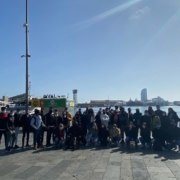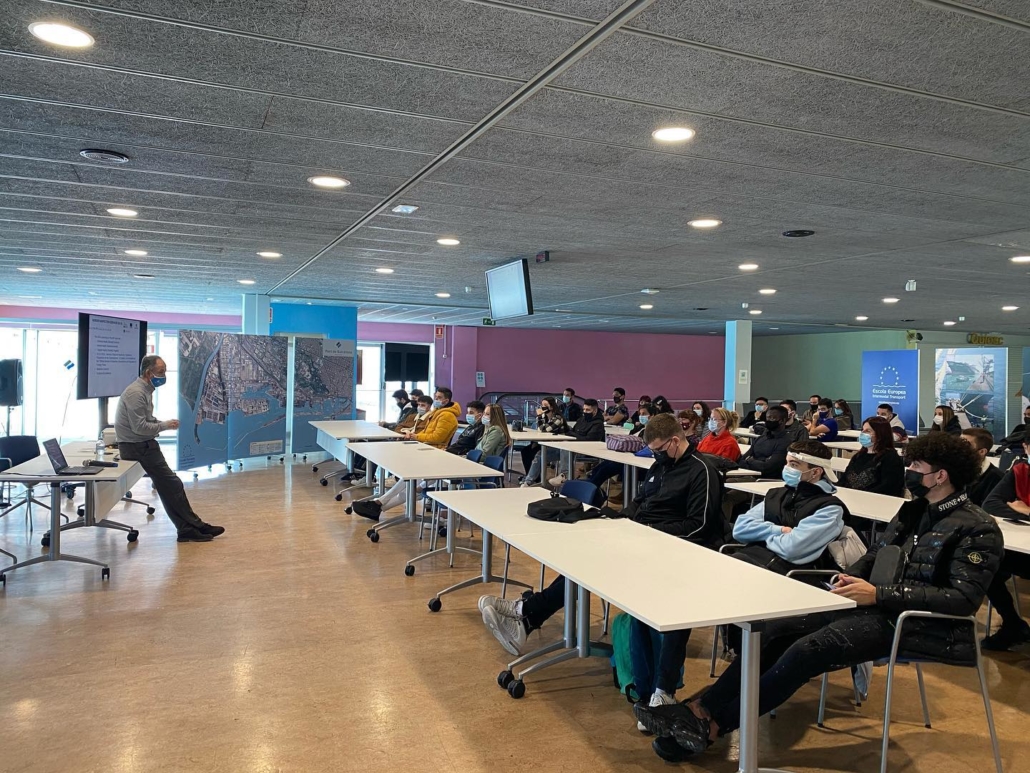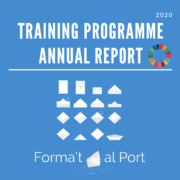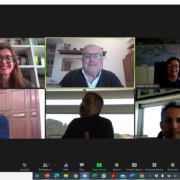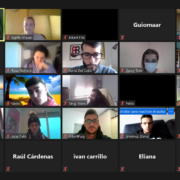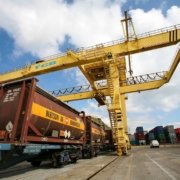Digital Training in the 21st century
Practice makes perfect

Written by: Lidia Slawinska, Consultant
There is no doubt about it. Historically educational models that incorporated experiential and real-life experiences have proven to be more successful. Currently many professions already employ experiential training approaches – learning-on-the-job, internships, and fellowships are but some examples.
The Escola Europea Intermodal Transport has always believed in the experiential teaching model – explain the theory of the transport operations to the students whilst simultaneously taking them to the places where the operations themselves take place. This was made possible through the signature MOST and SURCO courses, which included on-board sections of the courses where students go to visit transport terminals and experience journeys in intermodal transport means (a Ro-Pax vessel or a train). 2020 has put a stop to this and forced us to think of new models that will help bring the operations closer to the students. Through the EU-financed project YEP MED (Youth Employment in the Ports of the MEDiterranean), which launched in September 2020, a new training methodology morphed into existence – one that incorporated cyberspace with our own reality: Simulated Practice Enterprises.
Simulated Practice Enterprises
Simulated Practice Enterprises are enterprises recreated in a digital environment that simulates real-time conditions to allow for nearly real-life situations without actually having to involve real companies (and therewith lowering the possibility of costly errors). Running simulations with such practice enterprises provides a unique interactive learning experience for participants – as it forces them to apply what they have learned in a robust and risk-free environment. The students can cement their conceptual knowledge, develop vital skills and try out a number of different business strategies and business management concepts to hone their skills – all through such experimentation.
Such synergy between the theory and practice leads to the “formation and development of entrepreneurial spirit and skills, making integration easier prerequisites of future graduates in the labour market.”
Teaching business operations in a classroom is challenging, as it is nearly impossible to teach it in a purely theoretical fashion. Unlike other subject matters (science, sports, etc. where in-class experimentation and training is possible), within the field of business and business management, experimentation is not a feasible option. Frequently theory is not enough to prepare the student for realistic scenarios. Since the early 2010s, many companies have already begun to integrate simulated scenarios to their learning methodologies to better prepare students for the employment world. For example, in the Western Michigan University, Dr. Bret Wagner has integrated a simulation system, called ScrimmageSIM, which “gives students real-world experience in a virtual business setting”. The programme itself is “an effective tool because it does not give students the impression that there is a “right answer” to a business problem, as textbooks do. Rather, the programme engages students in the simulated business problem and shows how business concepts and theory provide insight into these complex situations. It does so by different business scenarios tailored to the business concept being taught.”
It is with this thinking, that the concept for the simulated environment was born for the YEP MED project.
Learning by Doing
The next iteration of a training methodology is in the virtual sphere. The Simulated Practice Enterprise is a methodological didactic strategy of “Learning by Doing” – through a digital lens. With the ERP system provided by Click & Cargo, the Escola Europea and its partners have worked to develop a digital environment that will:
- Promote simultaneous and integrated development of functional competencies of organisational management (social, human and business) based on a methodological-didactic simulation system that allows for contextualised and experiential knowledge.
- Encourage the responsible and autonomous development of the student body from a problem solving and decision-making standpoint, when faced with unpredictable events, incidents and conflicts that can emerge from the dynamics of a company and its interactions with customers and suppliers.
- Develop a permanent synergy of the contents from the continuous connections between teaching and learning activities within the local productive system.
- Contribute to the vocational guidance of students and the employability of graduates through the creation of role-playing assessments and specific tasks representative of the world of work.
This innovative and new approach will allow for the Escola and its partners to maintain its experiential teaching method, whilst giving the students more opportunities to test out many of the business and supply chain management concepts. Keeping in line with the Escola’s ideological approach which is aligned with the United Nations Sustainable Development Goals, the simulated environment will be open to 17 distinct groups – each corresponding to the thematic aspects of the SDGs themselves. The groups will be able to use the platform to prepare different commercial offers, learn about managing dangerous goods, discovering the machinations behind the cold chain, among other primary transport operations.
The Simulated Resource Enterprises will be put to test in the courses carried out under the YEP MED project – which themselves are divided into three parts. The ERPs will be used by students when they reach the 2nd and 3rd levels of the training. The simulated environment is designed to be as realistic as possible – and could replicate the conditions of a practical internship, giving the students the invaluable skills and experience before entering the workforce. Because the pandemic has made it difficult for companies to accept trainees to offer such opportunities, it is the goal of this part of the YEP MED project to have the simulated environment act as a near-identical virtual substitute. This way, before entering the workforce, the students will be able to learn by doing, and therewith enter the employment sphere fully prepared with virtual experience.
Digital practice will, in fact, make perfect.
Sources:




